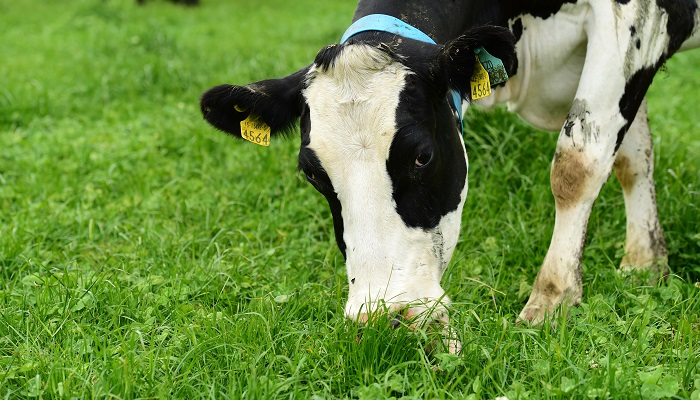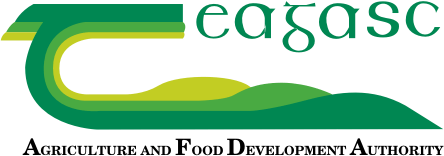27 June 2023
Ballyhaise’s road to clover incorporation

Commencing in 2021, Ballyhaise College is currently in its third year of clover incorporation. Prior to that, the farm was behind the curve in terms of clover compared to other farms like Moorepark, which had already demonstrated positive outcomes from clover inclusion.
On a recent episode of Let’s Talk Dairy, Donal Patton, Technologist at Ballyhaise, joined Teagasc Dairy Specialist James Dunne to give an update on a new research trial, which is looking at incorporating clover into grass swards in Teagasc Ballyhaise.
Ballyhaise farm has accumulated 15 years of data on grass growth, indicating its capability to yield 14t DM/ha. However, considering the project’s future challenges with nitrogen application, the decision was made to prioritise clover incorporation as an alternative solution.
To formulate a plan, a steering group was convened in August 2020. Its objective was to propose a conversion of a portion or the entirety of the farm to clover production. At that time, the farm lagged significantly behind in terms of clover presence, with almost no significant levels observed on the grasslands.
Nevertheless, these circumstances were viewed optimistically and served as an opportunity to investigate the transition process. Instead of a direct comparison between cows grazing on grass versus cows grazing on grass-clover, it was decided to approach the study from a fresh perspective – focusing on the transitional phase from grass-dominated pastures to those enriched with clovers.
What are they doing?
Donal and his colleagues originally approached the project with a slow and steady approach. While establishment was a significant concern, persistence of clover in heavier soils emerged as an even more significant challenge according to some organic farmers from Donegal who were consulted. As a result, Donal opted to accelerate the process by employing both full reseed and over sowing techniques.
Initially, over sowing was intended to hasten the process, as it allowed for grazing while attempting to establish clover. However, the success rate of over sowing was not as high as reseeding. While reseeding led to better and more productive swards, it required removing the land from production for a longer period.
Donal describes how the turnaround time for reseeding was six weeks. However, the actual time taken over the past three years has been closer to eight weeks and this year it may be extended to 10 weeks due to unforeseen circumstances. This system has a significant effect, impacting the first and second years and likely affecting the current year as well. The success rate of over sowing was lower, with some instances of notable success but also cases of complete failure – a common observation among commercial farmers nationwide.
When comparing clover percentages between reseeded and over-sown paddocks in 2022, the clover content initially started in the mid-teens and declined gradually. However, a divergence occurred in June, where the reseeded paddocks exhibited greater clover content compared to the over-sown paddocks. From August to September, the reseeded paddocks averaged around 60% clover content, while the over-sown paddocks were at approximately the mid-40% range. It is important to note that these percentages were not based on visual assessments, but were accurately measured through separation in every paddock and rotation. While the over sown approach yielded lower overall clover content, it still achieved satisfactory levels – reaching above 40% in the first attempt.
Regarding the 2021 paddocks, approximately 80% of the area covered can be considered a success. However, last year’s paddocks experienced a complete failure, mainly due to unfavourable timing. This year, over sowing was not attempted due to excessive wetness followed by a rapid dry spell. Timing has emerged as a crucial factor, particularly in the context of the specific land conditions. For this land, the optimal timing falls around April to May, allowing for a narrow window to achieve the desired outcomes.
As for the grass-only swards, similar reseeding levels were applied across all treatments, regardless of grass-clover or grass-only focus. Tonnage grown and nitrogen reductions were positive in 2021, with approximately 14.5 DM/ha grown, receiving 225kg of chemical nitrogen plus 25kg of organic N from slurry for grass-only treatments; 56kg of chemical nitrogen plus 25kg of organic N from slurry was applied to the grass-clover treatments. However, further statistical analysis is required to ascertain the full extent of these findings.
When it comes to managing grass clover swards, there has been a shift in mind-set. Initially, there may be a yellow and hungry appearance in clover swards 10 days after grazing, which often tempts farmers to apply nitrogen. However, with time, the swards catch up and become ready for grazing. If the clover content is maintained, it would be a positive outcome. However, there has been pressure on clover content due to wet conditions in the autumn.
What are they hoping to achieve?
Donal and his group are taking a fresh approach to reducing nitrogen usage. Instead of comparing cows grazing on different types of pastures, they are focusing on the transitional phase from grass to clover-enriched pastures.
Their objective is to convert a portion or the entirety of the farm to clover production. This gradual transition allows them to assess the benefits and develop an efficient, cost effective strategy. They will monitor soil quality, nutrient levels and animal performance while considering factors like grazing management and costs.
Donal and his group are open to learning from their mistakes and sharing their failures. They understand that some questions may not have immediate answers, but they are willing to gather data and knowledge over time to address them.
Donal provides more information on the clover trial in Ballyhaise in the webinar recording below:
Listen in as a bonus episode of The Dairy Edge podcast below
Let’s Talk Dairy is a weekly webinar series held every Thursday morning, offering timely, relevant and practical advice to allow you make better management decisions on your dairy farm. Watch back previous webinars or register for future webinars here.
